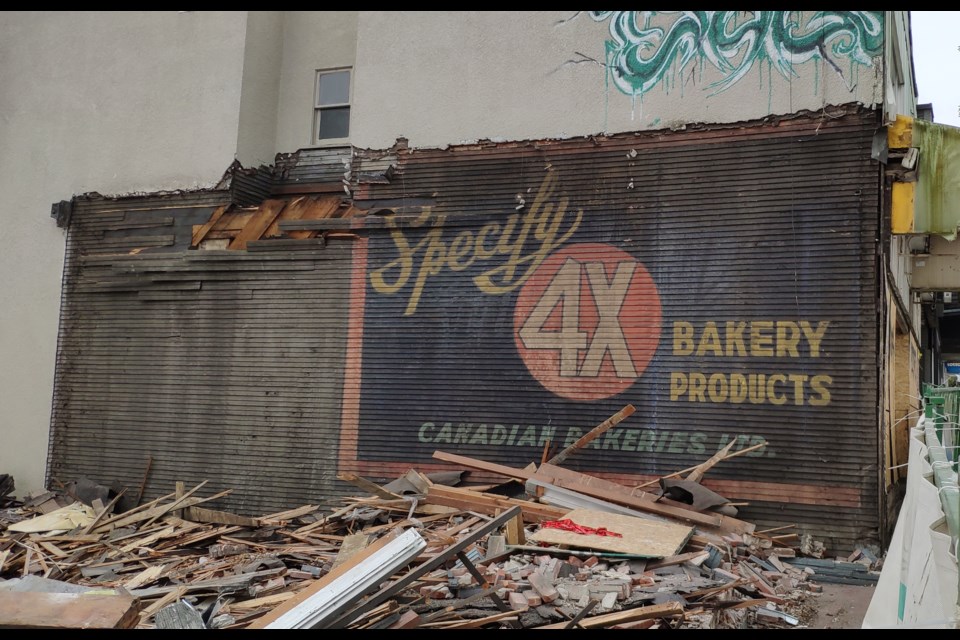https://www.vancouverisawesome.com/v...EXSBHlq0ewu76k https://www.vmcdn.ca/files/via/files...edium=referral
Neighbourhood Historical Information
Street and place names:
East 34th Avenue – In South Vancouver was originally Bodwell Road prior to 1910. South
Vancouver By-law 141, 1910 changed Bodwell Road to East 35th Avenue east of Cambie
Street. Then in 1929, after amalgamation, East 35th Avenue became East 34th Avenue.
Nanaimo Street – Shown on Plan 100, a resurvey of Hastings Townsite in 1906, and
named after the provincial government after the Nanaimo Mining Division. Nanaimo Street
was Vancouver’s eastern boundary from 1886 until 1910, when the sparsely settled
Hastings Townsite to the east voted to amalgamate with it. The jogs in the east-west roads
north of First Avenue (an area settled by the time of the amalgamation) reflect the different
surveys on either side of the old boundary line. Vancouver’s southern boundary was at
16th Avenue until 1929, where it abutted the municipalities of South Vancouver and Point
Grey.
Kingsway - Originally a foot trail for local First Nations, it then became a wagon road in
the mid-19th century. Stretching diagonally from Vancouver’s Main Street just south of East
7th Avenue and becoming 12th Street at the Burnaby-New Westminster border, Kingsway
is a living part of our region’s history and cultural fabric.
It was named after Kingsway, a thoroughfare in London, England. Completed in 1906 and
named in honour of King Edward VII. Vancouver By- law 1114, 1913 (covering the
distance between Main and Knight Streets), and South Vancouver By-law 197, 1913
(covering the distance from Knight Street to Boundary Road), changed Westminster Road to
Kingsway.
In 1911, Vancouver By-law 842 changed New Westminster Road to Westminster Road.
There was no comparable South Vancouver By-law. The Granville and New Westminster
Road, shown on Plan 187 (1885), was the popular name for the trail slashed between New
Westminster and the Granville Townsite. This trail was also known as the False Creek Trail,
constructed in 1860 on the recommendation of Colonel Moody, to link New Westminster
with the government reserve on English Bay.
Westminster Road became the auto route heading south once the Fraser River was bridged
at New Westminster in 1904. Nine years later Westminster Road was widened and paved
with asphalt. Vancouver City Council celebrated by changing the name to Kingsway. On
the improved route’s opening in October 1913, some 600 cars paraded four abreast along
Kingsway’s pockets of settlement amidst farms and empty lots to a celebration at Central
Park in Burnaby.
The booming 1920s made it possible for more and more families to afford an automobile
and thereby holiday trips no longer dependent on public transportation. Together with gas
stations, garages, and cafes, Kingsway acquired its first auto camps.
Determination grew to widen Kingsway to three lanes in each direction. No sooner had the
cost of the 1913 improvements been repaid in 1925, the talk began. Some work was
completed during the early 1930s, but it took until the end of the Second World War for
2308 East 34th Ave. Historical Research Summary
Prepared by Christine Hagemoen, July 2020
11
the project to get underway and until 1949 for it to be completed. By then Kingsway was
the main arterial highway not only heading south but also east along the new TransCanada Highway. Kingsway was re-opened as a six-lane highway between Vancouver and
New Westminster In 1949. It was described as ‘strikingly handsome’ in the newspapers.
However, the future so optimistically envisioned for Kingsway was not to be. Across North
America, the first generation of roads was mostly bypassed by extensive highway
construction beginning in the 1950s.
Source: “Street Names of Vancouver” (1990) by Elizabeth Walker;
https://2400motel.com/car-culture/ ; Birmingham & Wood Architects Planners “2400 Motel
Statement of Significance for The City of Vancouver” January 2007;
https://www.vancouverheritagefoundat...r-ofvancouver/
Significant historic buildings/businesses in the surrounding neighbourhood:
2400 Motel – 2400 Kingsway –constructed in 1946 just north of 33rd Avenue between
Nanaimo and Slocan. Its original name of 2400 Court signaled the growing sophistication
of accommodations. Auto camps were giving way to auto courts, which offered a common
open space, or ‘court,’ fronting furnished bungalows with kitchenettes. A large blue and
red neon sign greeted travelers as they crested the hill to 2400 and viewed Vancouver in
the distance. Car culture was at its height, and a future filled with tourists appeared to be
assured. The buoyant postwar economy permitted more and more families not only to own
cars but to afford the leisure they facilitated. The 2400 Motel was one of the first drive-in
motels in the area, and is now the last.
Source:
https://2400motel.com/car-culture/ ; Birmingham & Wood Architects Planners
“2400 Motel Statement of Significance for The City of Vancouver” January 2007.
John Norquay School - 4710 Slocan St & Annex (B) – 5330 Nanaimo Street – 1913 –
present. Named for John Norquay (1841-1889), the first Premier of Manitoba. Originally
built in the Municipality of South Vancouver. "The school, opened in August 1913 under
the principalship of Mr. J. A. Hamilton previously in charge of Brock School, consisted of
four divisions, a fifth division being added during the term." By the 1919-1920 school year,
the enrollment had risen to 344 students. The first Norquay Annex (A) opened at 3323
Slocan Street in 1928 until 1955. In 1959, Norquay Annex (B) opened at 5330 Nanaimo
Street at E. 37th Avenue, which was replaced by Cunningham Elementary School in 1966.
George T. Cunningham Elementary School - 2330 East 37th Avenue - 1966 – present.
Named for George T. Cunningham (1889-1965), Vancouver politician and founder of
Cunningham Drug Stores Ltd. (now Shoppers Drug Mart). Replaced Norquay Annex (B).
 You are currently viewing our boards as a guest which gives you limited access to view most discussions and access our other features. By joining our free community you will have access to post topics, communicate privately with other members (PM), respond to polls, upload content and access many other special features. Registration is fast, simple and absolutely free so please, join our community today!
The banners on the left side and below do not show for registered users!
You are currently viewing our boards as a guest which gives you limited access to view most discussions and access our other features. By joining our free community you will have access to post topics, communicate privately with other members (PM), respond to polls, upload content and access many other special features. Registration is fast, simple and absolutely free so please, join our community today!
The banners on the left side and below do not show for registered users!














